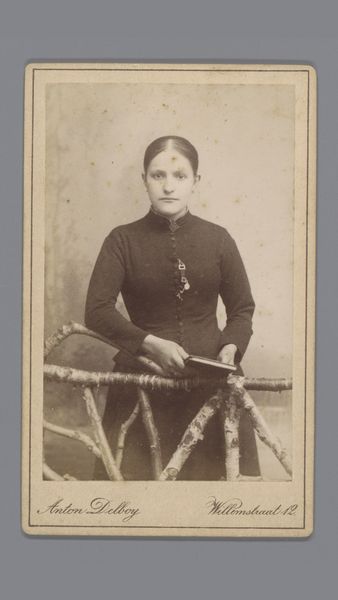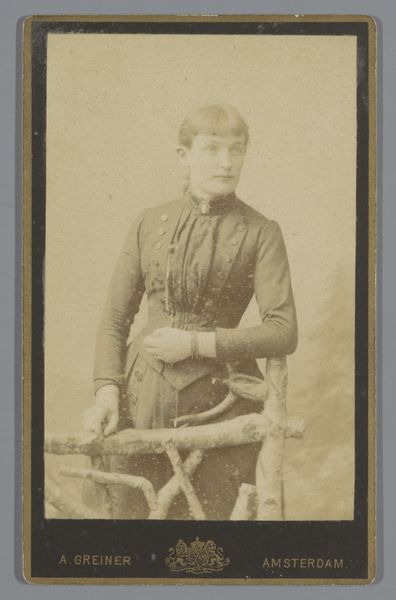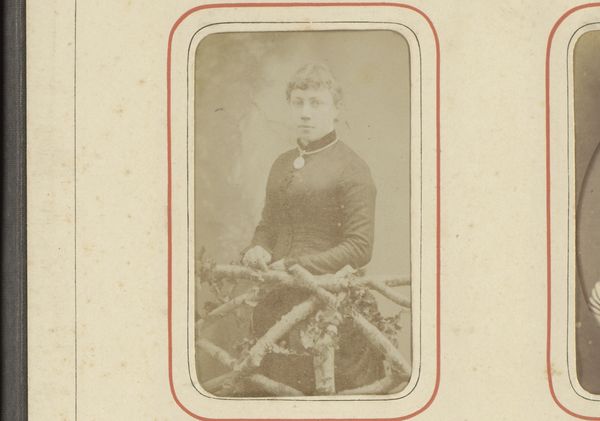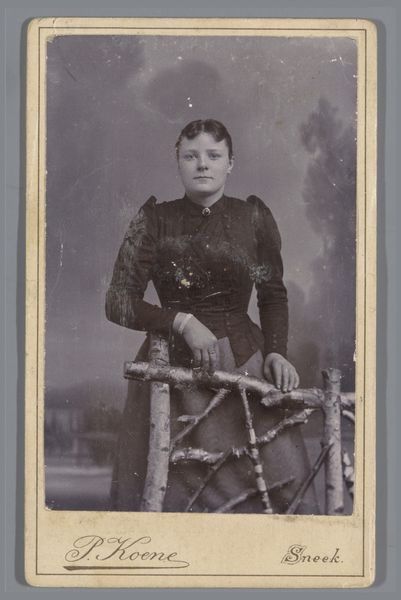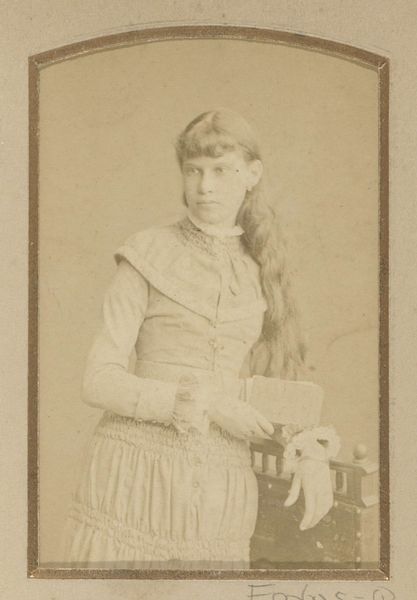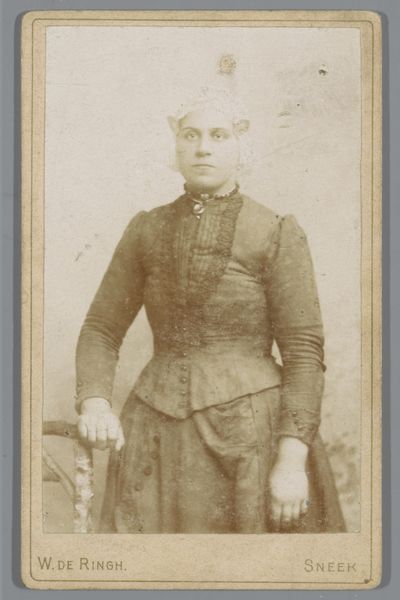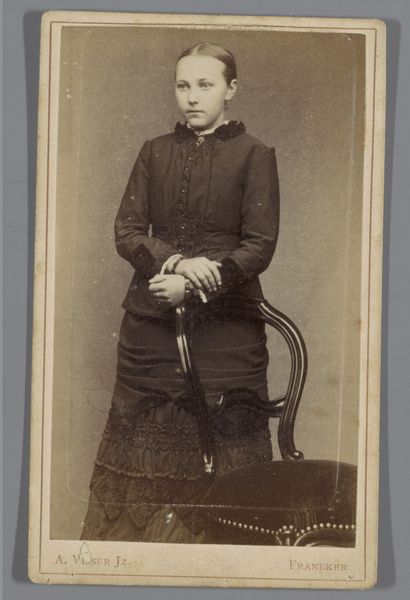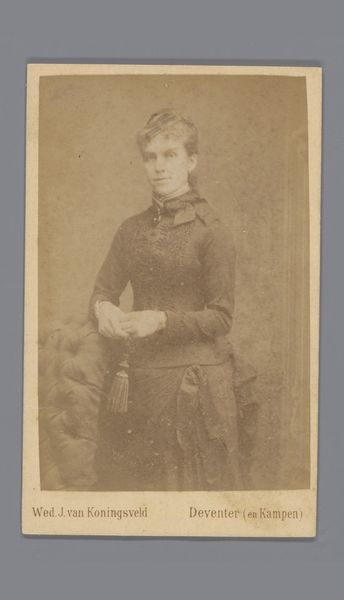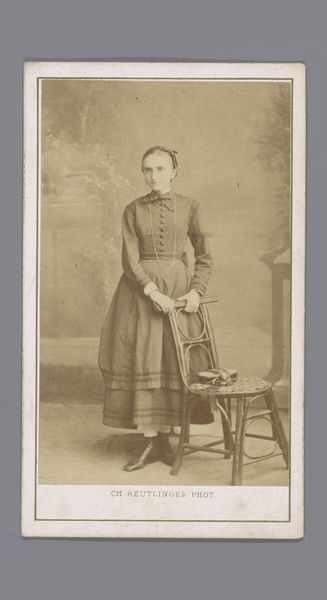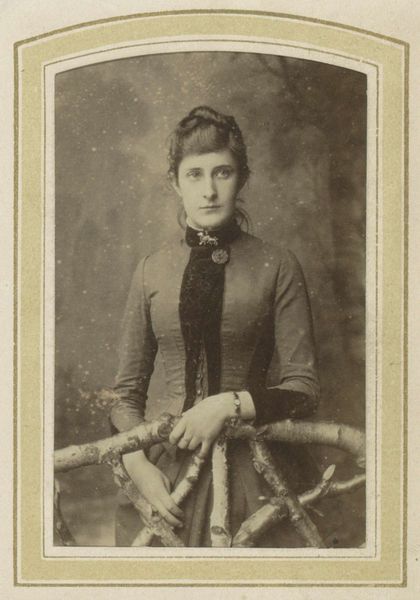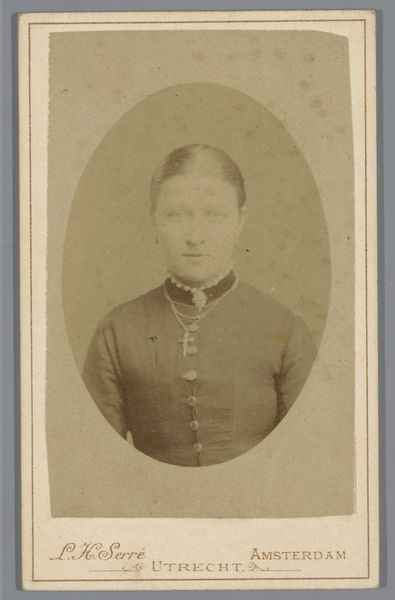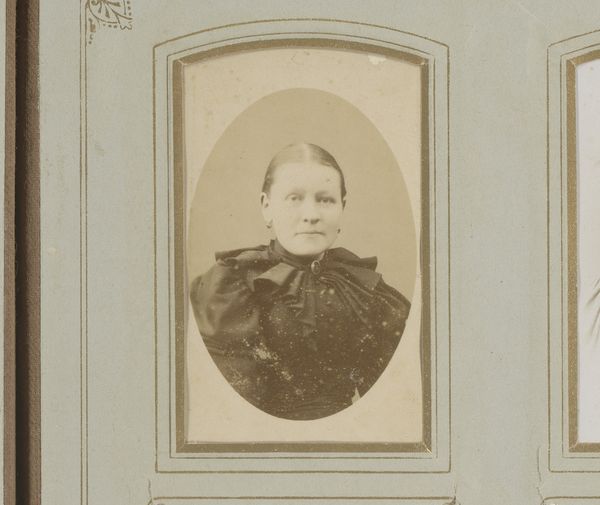
photography, gelatin-silver-print
#
portrait
#
photography
#
historical photography
#
gelatin-silver-print
#
realism
Dimensions: height 135 mm, width 95 mm
Copyright: Rijks Museum: Open Domain
Curator: There's a certain solemnity in this portrait. It depicts a woman, taken sometime between 1880 and 1920, standing behind a kind of rustic, almost deliberately artless fence of branches. Editor: Austere. That's the word that springs to mind. The limited tonal range, the woman's reserved expression, even the barrier of twigs – it all conveys a kind of stoicism. Curator: It’s a gelatin silver print, a relatively modern photographic process for its time. The stark realism offered by photography, versus painting, surely shifted public perception. The sitter may have wanted a faithful likeness, absent the flourishes of artistic license. Editor: I think you are right, it emphasizes the shift of photographic portraits allowing access to visual representation for emerging social classes. It is a form of documentation in a historical frame, but also a social practice as portrait photography grew in popularity at the turn of the century, mirroring anxieties around identity and social visibility. Curator: That element of visibility is intriguing, especially given the fence. Is it a symbolic boundary, or merely a stylistic choice of the photographer, meant to echo a rural idyll? Perhaps the branch barrier indicates that this photo represents a certain socio-economic context: a sort of rural, 'earthy' persona constructed and consumed. Editor: Or maybe that type of photographic approach promoted visual biases. How 'honest' can photography ever truly be? The pose, the setting… these are carefully selected signifiers, reinforcing cultural ideas of virtue and humility for this portrait to exist. Curator: Indeed, she is consciously composed, it may have an element of reinforcing, if not reconstructing her place in society, where individuals exercised agency, or even faced social or class pressures to conform to certain ideals of beauty, which, through popular imaging, becomes cultural expectations. Editor: Still, regardless of that deliberate construction, there’s an enduring human presence captured. The act of memorialization is undeniable. Curator: Ultimately, it invites us to consider the gaze, the photographed subject, and what narratives might endure in our own memory. Editor: Absolutely. A quiet piece, but richly suggestive of how images perform ideological labor for communities, then and now.
Comments
No comments
Be the first to comment and join the conversation on the ultimate creative platform.
